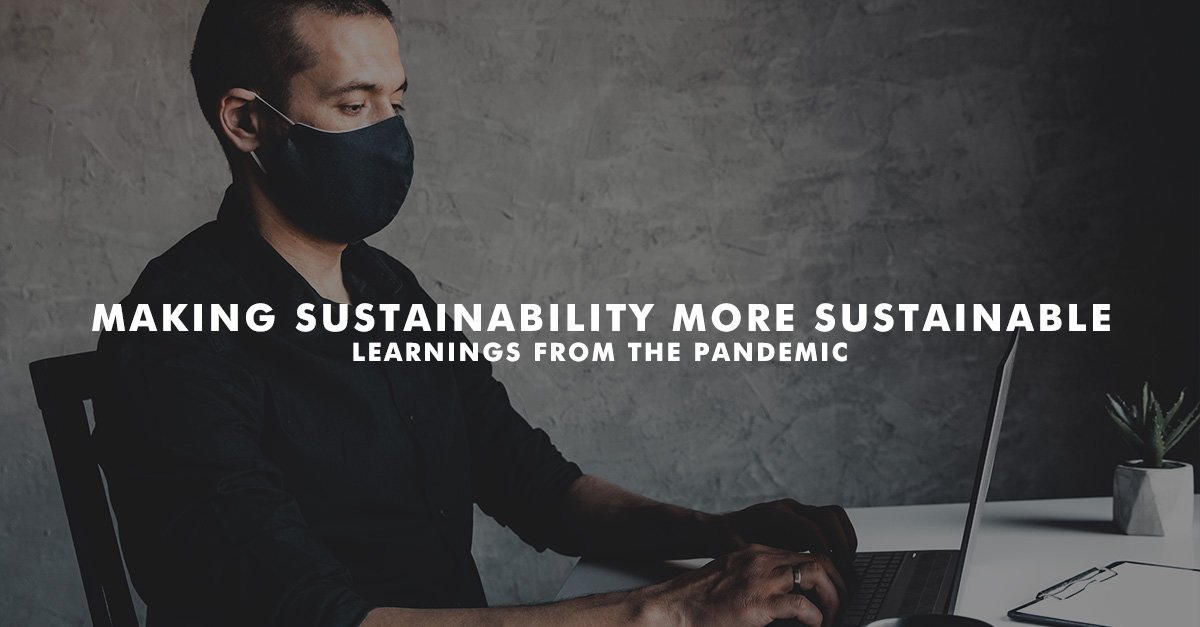
Making Sustainability More Sustainable: Learnings from The Pandemic
“Sustainability is not just an organizational business practice but an all-new strategy for organizations to flourish in the long run by embedding digital tools with sustainable environmental goals.”
Businesses faced disruption, organizations transformed, and business practices adopted to digital practices, investing in digitization. Just like it has resulted in many new business practices flourishing; it has also resulted in many untouched and less prevalent business practices emerging. Sustainability is one of them.
Sustainability refers to a practice that entails using the present resources to fulfill the needs without compromising the future needs of the upcoming generations. COVID-19 pandemic turned the world upside down, making organizations invest in digital tools to face the crisis and prepare them for unprecedented events and situations.
Sustainability among the business practices, which looked just a mere concept a few years ago, has become of utmost importance due to the uncertain situation that prevailed.
The rating agencies, the sustainability indices, and the regulatory compliances are seeing the sustainability practice with more concern and also rates organizations higher; inculcating sustainability practice in its operations.
COVID-19 has amplified the crucial role of businesses by compelling them to invest in digital technologies and paving a way ahead among the competitors.
Furthermore, sustainability has emerged as an effective business practice that is considered one of the critical business metrics that makes organizations more competent by addressing environmental; social, and governance (ESG) challenges and contributing to global goals.
Sustainability And Businesses – A Turnaround Element:
As the market is going disruption, organizations observing the change in business models, and the innovative technologies evolving; the businesses are focusing on modifying the BCP (business continuity plans).
Firstly, organizations follow the BCP modification as one of their business strategies to cope with the existing risks and prepare for unprecedented potential risks that may emerge.
However, the World Economic Forum’s latest report suggests that environmental-related issues dominate the top five risks for organizations.
Just like the opportunities sustainability and ESG brings to the organizations, it also poses a few risks. Moreover, these environmental risks now challenge all organizations’ strategies and operating models; filling the gap between the digital strategy and ESG related risks.
However, bridging the digital and environmental sustainability goals requires a business, ecological and cultural transformation.
Finally, sustainability is easy to adopt but more brutal to manage due to the risks it brings. While the risks mitigation plans from the companies are in place; the most common sustainability and ESG related risks that organizations observe are listed below:
Strategic Risks:
Almost all organizations follow a blueprint of strategies while dealing with day-to-day operations in their business practices.
It often misses strategically significant environmental issues integration into its business strategy, which poses strategic changes.
The rising climate change issues and their impact on the business processes make the organizations adapt to the environmental sustainability goals and digital transformation goals, giving rise to strategic risks.
Governance Risks:
Embedding the environmental sustainability goals with digital transformation strategies is not as easier as it looks.
Lack of communication among the various stakeholders in the entire value chain of the governance structure of organizations results in governance risks.
Such risks range from market access to the competitive regulatory scenario spread across the business units.
Business Models Risks:
The digital disruption has resulted in organizations remodeling their business models.
Successful transformations require the role of technology as a driver for new digitally enabled business models.
The transition to digital-at-the-core business models focuses on service offerings that open new market opportunities and yield environmental efficiencies by optimizing ecological resources.
Amid these uncertainties; reshaping a business model that serves as the ideal for business processes results in risks in business models.
Making Sustainability – Mitigating The Risks:
Risks that sustainable practices face are common among business practices.
Lack of proper alignment of organizations’ environmental and sustainability goals results in these risks.
Timely identification and mitigation of such risks make sustainability more sustainable.
Mitigating Strategic Risks:
A robust, environmentally sustainable approach to mitigate such strategic risks requires leaders to define the issues that result in such risks.
Businesses and stakeholders need to identify the potential risks by identifying the most common risks elements.
Strategic risks get mitigated by conducting a risk assessment to determine the significant environmental risks and opportunities to the organizations by collaborating with the stakeholders over the entire value chain of business practice.
Mitigating Governance Risks:
Governance structure in any organization plays a vital role in the smooth functioning of its business processes.
Bringing in digital tools along with the environmental goals boosts the overall business performance.
Articulating a long-term value creation and environmental sustainability strategy mitigates the governance risks and makes the business processes efficient.
Designing KPIs supported by targets, resources, and digital technology makes the organizations more resilient and achieves smooth, desirable business goals.
Mitigating Business Models Risks:
Business models risks are potential enough to knock down the entire business practice of any organization in any sector.
Hence, designing a risk mitigation plan to redefine a business model results in mitigating the business risks models by addressing data-sharing across isolated organizational groups.
Organizations achieve this by optimizing and tracking the environmental and economic savings to achieve digitally enabled business models.
Conclusion:
In conclusion, In the digitally transformed business environment, risks are bound to incur.
Above all, mitigating these risks by focussing on strategies’ digital and environmental aspects results in digital transformation and ESG benchmarking.
Sustainability is not just an organizational business practice but is also an all-new strategy for organizations to flourish in the long run by embedding digital tools with sustainable environmental goals and creating long-term values for all stakeholders.





